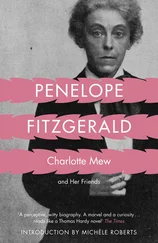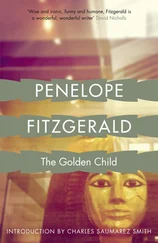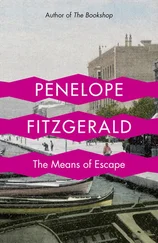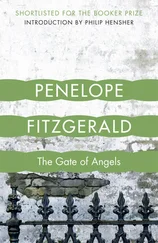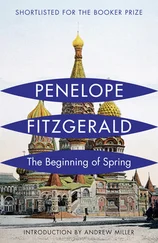Penelope Fitzgerald - So I Have Thought of You - The Letters of Penelope Fitzgerald
Здесь есть возможность читать онлайн «Penelope Fitzgerald - So I Have Thought of You - The Letters of Penelope Fitzgerald» — ознакомительный отрывок электронной книги совершенно бесплатно, а после прочтения отрывка купить полную версию. В некоторых случаях можно слушать аудио, скачать через торрент в формате fb2 и присутствует краткое содержание. Жанр: unrecognised, на английском языке. Описание произведения, (предисловие) а так же отзывы посетителей доступны на портале библиотеки ЛибКат.
- Название:So I Have Thought of You: The Letters of Penelope Fitzgerald
- Автор:
- Жанр:
- Год:неизвестен
- ISBN:нет данных
- Рейтинг книги:5 / 5. Голосов: 1
-
Избранное:Добавить в избранное
- Отзывы:
-
Ваша оценка:
- 100
- 1
- 2
- 3
- 4
- 5
So I Have Thought of You: The Letters of Penelope Fitzgerald: краткое содержание, описание и аннотация
Предлагаем к чтению аннотацию, описание, краткое содержание или предисловие (зависит от того, что написал сам автор книги «So I Have Thought of You: The Letters of Penelope Fitzgerald»). Если вы не нашли необходимую информацию о книге — напишите в комментариях, мы постараемся отыскать её.
So I Have Thought of You: The Letters of Penelope Fitzgerald — читать онлайн ознакомительный отрывок
Ниже представлен текст книги, разбитый по страницам. Система сохранения места последней прочитанной страницы, позволяет с удобством читать онлайн бесплатно книгу «So I Have Thought of You: The Letters of Penelope Fitzgerald», без необходимости каждый раз заново искать на чём Вы остановились. Поставьте закладку, и сможете в любой момент перейти на страницу, на которой закончили чтение.
Интервал:
Закладка:
Tina and I had married in 1973, and now we bought a three-storey house off Battersea Rise – the 25 Almeric Road of the letters – so that her parents could come and live with us. Desmond continued to go to work, growing frailer and thinner, but still as funny, endearing and patient. He died in the summer of 1976. In the first of the letters to her old friend, Maryllis, Penelope describes the morning of his death, at home, the district nurse reading to him: ‘such a kindly person, not much of a nurse but a very good woman, and she helped me to see him out of this world and read a Bible chapter, absolutely naturally, as only a West Indian could do’. In the same letter she reflects: ‘the truth is I was spoilt, as with all our ups and downs Desmond always thought everything I did was right’.
Penelope kept four close friends from her childhood and youth: Maryllis Conder (’Willie’), Jeanie Fisher (later Lady Talbot), Rachel Hichens and Janet Probert. Marriage, child-rearing, work and geographical distance separated them for long years after the war, but Jeanie and Maryllis in particular became a great support to her in her widowhood.
‘Your mother has been my dearest friend,’ wrote Willie to Maria. They met at Wycombe Abbey, ‘a terrible place’, as Penelope remembered it. She was thinking of its aping of boys’ boarding schools, the sport, the cricket, the rituals, but it was principally terrible to both of them because of their home-sickness: they cried themselves to sleep for the first three weeks of every term. English Literature, however, was inspiringly taught (’under Daisy’) and was a shared consolation. They would both go on to study it at Oxford, though Penelope’s great enthusiasm was Art and Maryllis’s Music. They sat together in class, laughed at the same absurdities, and Mops (as Penelope was always known to friends) would help Willie with her essays. At the end of their last term at Wycombe, Penelope’s mother, Christina, died. Her father, Evoe, was too grief-stricken to speak of her, and she went to stay with Maryllis and her family in Devon. ‘It was a painful visit,’ Maryllis said, ‘but she told me later that it had helped her.’ During the war, as young women, they would meet unfailingly every week for lunch. ‘How clearly I can see her walking down Sloane St with me in her cherry coat.’
It is a strange thing that some good friends (and even family members) don’t always welcome the transformation of a person known so well into a successful writer, almost as if they had been hiding something from them and had now to be seen in a different light. Maryllis emphatically didn’t fall into this category, but devoted a corner of her study to Penelope’s books and drawings, her idiosyncratic Christmas cards which gave such pleasure. She also kept a selection of her letters (’in my Mops letters file box’), which covers the last twenty-five years of her life. ‘You know what a wonderful letter-writer she was.’
Willie and her husband Mike had restored a beautiful small Jacobean manor house, ‘Terry Bank’, near Kirkby Lonsdale. It had always been in the Conder family and still retains some of its original furniture. It is a tranquil place in a serene setting. Here, or to their converted lighthouse on Alderney, they invited Penelope every year. ‘We had some very happy times together, unforgettable’. In the dramatic hillside garden they created on the bank behind the house they planted the Himalayan Blue Poppy (Meconopsis baileyi: The Blue Flower) in her honour. The letters provide a remarkable record of friendship and a continuing conversation. They discuss their children and grandchildren, plantings in their gardens. There is the occasional glimpse of Penelope’s busy literary career. They sympathise with each other over their ailments. Maryllis wrote to Tina after Penelope’s death that her mother had appeared to her at night in her room to console her and to tell her not to worry. It sounds the sort of thing she would do.
Another loving friendship of a whole life is detailed in the letters to Rachel Hichens (and her daughter Elizabeth Barnet, Penelope’s goddaughter). Each married a Cornish vicar, and they were and are rich in good works in a way with which Penelope had almost complete sympathy, only regretting that she couldn’t match it herself. Rachel was the daughter of the writer Alfred Ollivant. She and Penelope met through their mothers’ friendship, in Hampstead, when they were both about six years old. She told her daughter that she believed Penelope’s childhood to have been overshadowed by her mother’s illness. She worked at Bletchley Park during the war, where Dillwyn Knox was working on breaking the German codes. (He often tried to recruit his niece to help him, but unsuccessfully.) After both women married, they saw each other only occasionally, but Elizabeth often stayed with her godmother in London as a young woman, and found her and her family ‘so interesting’.
Mary Knox, Penelope’s stepmother (and illustrator of Mary Poppins, daughter of E. H. Shepard, illustrator of Winnie the Pooh and The Wind in the Willows) was only seven years older than Penelope, something that might have been resented, but wasn’t. They were frequent companions, so that letters were not really necessary. Nonetheless, many were written, though sadly only a few have survived. I hope they show how dear she was to Penelope, and to all the family.
These collections, which I am most grateful to have been given, depict Penelope as she was with those she loved, but inevitably those who ‘answered some of her long marvellous letters but kept none’ have had to be omitted: Jean Fisher, her friend from prep school, a source of practical kindness and help, as close a friend as Maryllis, if not quite such a kindred spirit – books were off limits; Rawle, her brother, to whom she pays tribute in A House of Air; finally her son, Valpy, of whom she writes in a never completed late essay, with perhaps rather whimsical and unjust exaggeration: ‘I’m not sure that he knows how to write a letter, and I think it possible that he doesn’t read them.’ She took the greatest possible pride in his achievements, as in those of her daughters. The last paragraph of her essay reads:
Once when we were living on the Suffolk coast and the mechanics of daily living had got altogether too much for me, Valpy who must have been about thirteen, looked at me thoughtfully and said he’d take me out for a row. We had a proofed canvas boat, the Little Emily, down on the marshes. She was anchored to a stake in the bank. Quite often one or other of the local boys would ‘borrow’ her and leave her wherever they felt like it. We had to go looking for her in the maze of reeds and narrow waterways. However, that afternoon she was lying patiently in her proper place. We got in and Valpy rowed for an hour or so under the immense shining East Coast sky, a watercolours sky. We went as far as the old pumping mill, through great banks of flowering sedge with grey leaves as sharp as saws. We rowed back, tied up, took out the rowlocks and walked home without saying anything, because nothing needed to be said. I felt more at peace then I think than I had ever done before.
II: Writing
For someone who was not at all business-like, Penelope managed her literary career decisively and with acumen. She would never employ an agent, and money is rarely mentioned in these letters. She was concerned first that her projects would be published, then that the books would look right, be error-free, reviewed, read and understood. About her writing she kept her own counsel, but she relied on her editors for much reassurance, help, advice and friendship. In finding four publishers in as many years (this was necessitated by the scope of her interests, and her shifts between the genres) she had only her talent and persistence to recommend her. She was probably introduced to Michael Joseph, who published her first book, Edward Burne-Jones, by Jean Fisher, whose cousin was the managing director of the firm. By a lucky coincidence, she had printed the first story of Raleigh Trevelyan, the editor who first read her biography, in her magazine World Review in the early ‘50s. They admired each other’s writing and became friends. Sadly, publishers’ archives are parlously preserved in these days, and I haven’t been able to trace any of her letters to him. The book’s status is an awkward one, because, as Penelope remarks, as a non-member of the art history establishment she wasn’t really allowed to have written it. Literary biographies are usually written about writers. It was patchily but well reviewed and, despite remaining the standard work on its subject, since no-one has discovered more about Burne-Jones, nor written as entertainingly about his loves and sorrows, nor with such enthusiasm and skill about his art, it is nonetheless the least read of her books, the only one now out of print, and never to have been available in America. This is a pity, for its non-readers have missed many wonderful vivid scenes, as when Robert Browning, woken by his geese, sees from his windows Burne-Jones desperately trying to prevent his mistress-muse, Mary Zambaco, from throwing herself off the bridge over the Regents Canal. Penelope’s correspondence with the eminent American Burne-Jones scholar, Mary Lago, shows like minds, whose interest in one subject draws them on and outwards, at the most unexpected tangent, to the next. The seeds of several of her later projects are in this vast, living, late-Victorian world.
Читать дальшеИнтервал:
Закладка:
Похожие книги на «So I Have Thought of You: The Letters of Penelope Fitzgerald»
Представляем Вашему вниманию похожие книги на «So I Have Thought of You: The Letters of Penelope Fitzgerald» списком для выбора. Мы отобрали схожую по названию и смыслу литературу в надежде предоставить читателям больше вариантов отыскать новые, интересные, ещё непрочитанные произведения.
Обсуждение, отзывы о книге «So I Have Thought of You: The Letters of Penelope Fitzgerald» и просто собственные мнения читателей. Оставьте ваши комментарии, напишите, что Вы думаете о произведении, его смысле или главных героях. Укажите что конкретно понравилось, а что нет, и почему Вы так считаете.

![Ally Carter - [Gallagher Girls 01] I'd Tell You I Love You But Then I'd Have to Kill You](/books/262179/ally-carter-gallagher-girls-01-i-d-tell-you-i-lo-thumb.webp)



